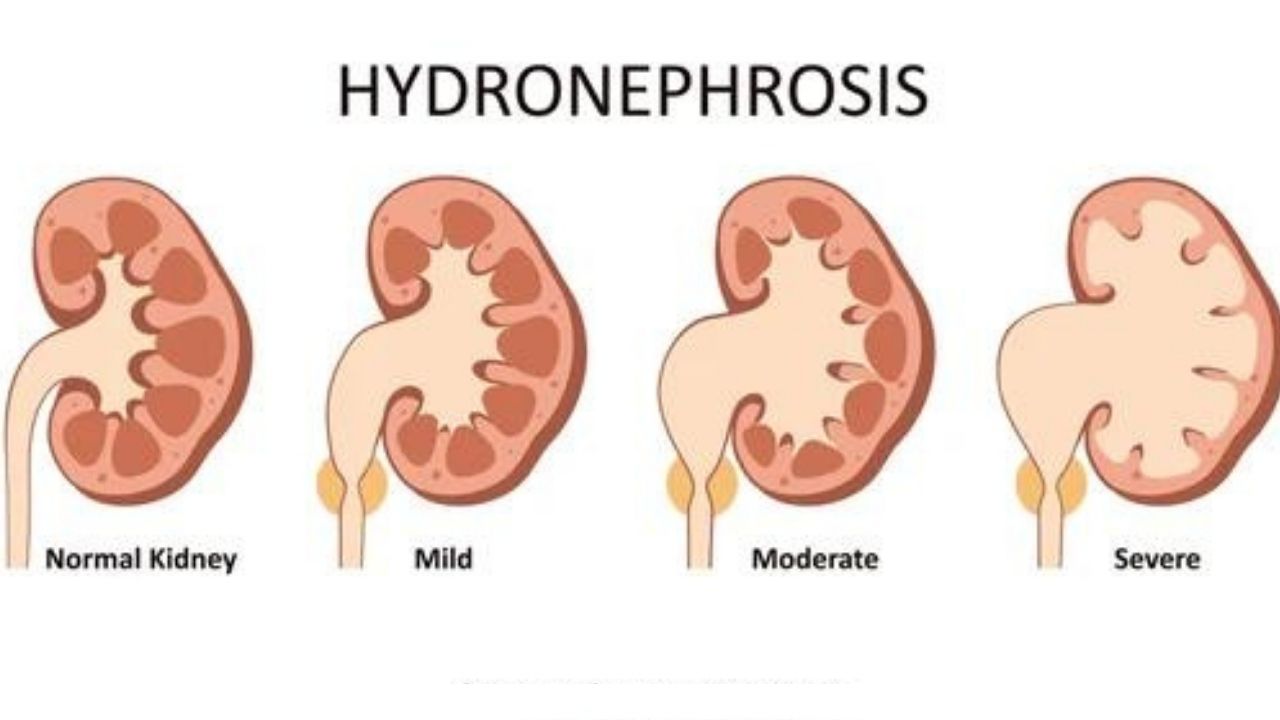Hydronephrosis or hydronephrotic transformation (hydronephrosis from the Greek. hydor-water, nephros-kidney) is a disease caused by a violation of the outflow of urine from the kidney, characterized by the expansion of the calyx-pelvic system of the organ with its subsequent atrophy. It is clear from the definition that “hydronephrosis of the kidney” is an “oily oil”, but patients often say that.

Hydronephrosis can be divided into two types:
- Primary or congenital hydronephrosis. This form of hydronephrosis, as a rule, develops as a result of congenital narrowing of the pelvic-ureteric junction. In the vast majority of cases, primary hydronephrosis is diagnosed at a young age (up to 30 years).
- Secondary or acquired hydronephrosis is a complication of any disease (urolithiasis, tumors, trauma).
During hydronephrosis, it is traditionally customary to distinguish three stages that have characteristic objective signs
- At stage I of hydronephrosis, the expansion of the renal pelvis (pyelectasis) is revealed.
- Stage II hydronephrosis is characterized by the expansion of not only the pelvis, but also the calyces of the kidney. At this stage, the kidney tissue begins to suffer, its damage and atrophy begins.
- Stage III – the final development of hydronephrosis. The kidney completely atrophies, stops functioning and turns, in fact, into a thin-walled sac.
Hydronephrosis Causes
- congenital narrowing of the pelvic-ureteric segment (LMS) – the place of transition of the renal pelvis into the ureter;
- the presence of an additional vessel going to the lower pole of the kidney, which intersects with the ureter and causes obstruction of the latter;
- abnormalities in the position of the ureter (for example, the location of the ureter behind the inferior vena cava);
- the presence of stones (calculi) in the lumen of the urinary tract;
- prostate adenoma;
- neoplasms of the ureter and bladder;
- traumatic injuries of the urinary tract, etc.
Diagnostics and surgical treatment of hydronephrosis
Modern diagnostic methods ( ultrasound , fluoroscopy, CT , MRI , radioisotope studies), as a rule, allow not only to identify hydronephrosis, but also to determine the cause of the development of hydronephrosis, as well as to plan surgery.
In the vast majority of cases, surgery is required to treat hydronephrosis. Surgical intervention for hydronephrosis is aimed at eliminating the cause of the violation of the outflow of urine.
Laparoscopy for hydronephrosis
Currently, there are a large number of surgical treatments for hydronephrosis. In this case, the main role is assigned to the so-called “minimally invasive” (non-traumatic) operations, for example, the treatment of hydronephrosis using laparoscopy. In particular, Andersen-Heinz laparoscopic pyeloplasty has long been the “gold standard” treatment for hydronephrosis caused by narrowing of the pelvic-ureteric segment. In good hospital, open operations for hydronephrosis are practically not performed.
Important
Most importantly: severe hydronephrosis inevitably leads to the death of the kidney.
The method of treating hydronephrosis is determined, first of all, by the cause of its development, as well as by the state of health, the age of the patient and, which is very important, by the technical and “human” capabilities of a particular medical institution.